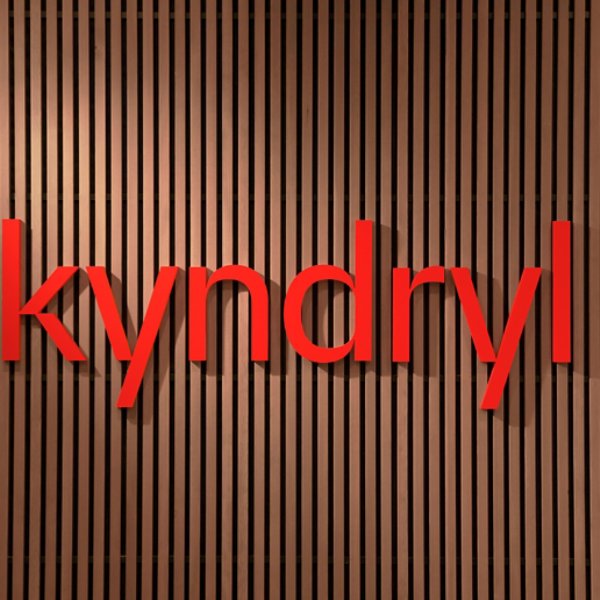Nick Drouet is a CTO for Kyndryl United Kingdom and Ireland, a role in which he serves as the glue which binds the company’s technical groups together. Drouet was selected to be part of the inaugural class of Kyndryl Distinguished Engineers, leading innovators who are shaping the future of Kyndryl and driving change in the industry.
What’s your role at Kyndryl?
Typically, when something complex comes in, it lands on my desk. I’ve got 25 years of experience from across a number of roles, something that has helped me gain a broad understanding of many of the technology areas and the impact it has on our customers.
My current role is all about understanding the full lifecycle of a customer’s need, from the challenge they are staring down through the advisory process, developing architectures, designing solutions, and the delivery of those solutions. At the end of the day, it means it’s my job to have a really good grasp on all our services and products and how they can fit together for our customers.
Can you share an example of your work that you feel particularly proud about?
It’s a good question. I think some of my bigger successes have been in the area of migration, initially with data centers and now with cloud.
For many of our customers, migrating their workloads is incredibly complex, like changing the engines of an airplane while it’s in midair. It’s incredibly complicated and I was seeing that, too often, a lot of projects were completed through sheer force and without the efficiency that was achievable. Seeing areas to improve, I got involved in building a repeatable methodology and a supporting set of tools for migrations of all kinds – and that has been incredibly successful.
So you’re really, really good at taking the complex and making it simple?
You might say that. Let me expand a bit about the tooling I just mentioned - something that might be more relatable has to do with spreadsheets and how they are used to support these kinds of changes. Basically, everyone has a copy of Excel, and because they had nothing better they just use that to create their own repository of everything. But too often, things got out of control — nothing was kept up-to-date, people changed things independently, and it just wound up being incredibly confusing when working with an immense amount of data to try and get a good sense of how things work from the highest level of a business to the nitty-gritty of its infrastructure.
If you don’t know how something works, you can’t change it. And if you can’t change it, the project stops. I thought, ‘There’s got to be a better way.’ So, I built a tool called Blue Bench for collecting, organizing and managing all these data about our customer’s estates. And that was my baby for two years, and has been in use for over 10 years.
Your work is so important for so many major enterprises that are customers of Kyndryl — but would it be noticeable to an everyday person with no technical knowledge?
Here’s the reality: If you are a customer at a bank, if you buy products, services, and food, if you fly on plane or drive a car, there’s a very good chance the services and products you use have been the subject of migration work that has happened behind the scenes during the last 15 years. This is typically complex and challenging work, and must be done with the utmost care — all while not causing any interruption to our customer’s customers. My work was used in hundreds of these situations, and the prospect that someone never noticed it means that I did my job right!
How do you feel about being named a Distinguished Engineer?
For me, Distinguished Engineers were always people you looked up to a lot. When you ever got to talk to a Distinguished Engineer, their advice brought clarity. You can learn loads from people like that. So, for me to get to this level was like, ‘Wow!’ It’s intense! Being recognized in this way is really the pinnacle of a technical career, and I am hugely honored.
Also, receiving this honor at Kyndryl is important to me, too. The people, the independence, and the challenge here make it a special place. We really have the best people in the industry. And no matter how much or little experience you have in the industry, how many opportunities will you get to make a difference in a brand-new company of this size? I’ve interviewed a lot of people who have joined specifically for that reason. It’s a once-in-a-lifetime opportunity. For me, that’s the greatest thing. We have the opportunity to do great things with new partners and customers — and to take existing customers to places that they didn’t think possible.
Across the course of your career, is there a big trend or change you’ve seen that’s really reshaped the inner workings of how enterprises operate?
The biggest change I’ve witnessed is the massive embrace of Open Source software which moved from a niche right into the heart of the enterprise. This started with the disruption of the Unix market with Linux, through Open Source versions of every kind of application and infrastructure component, and which underpins many of the technologies deployed in the hyperscalers. That kind of change has enabled the speed of change to dramatically increase and has democratised technology for our clients.


